Unit 30 - Location Photography
Evidence required for assessment:
• 800 word Research essay on specialist fields of location photography.
• Six to eight photographs for the two themes, (Documentary Mandatory)
mounted for presentation.
• Notes on colour theory.
• Exercise – Technical notes and illustrations shot using different light
sources to show investigation of their colour properties.
• 800 word Research essay on specialist fields of location photography.
• Six to eight photographs for the two themes, (Documentary Mandatory)
mounted for presentation.
• Notes on colour theory.
• Exercise – Technical notes and illustrations shot using different light
sources to show investigation of their colour properties.
Summer 2016 Project
Summer project brief, to look a two structures and examine the architecture, detail & atmosphere
Torquay otherwise known as the "English Riviera" it a coastal town with a huge array of buildings and structures from many different eras & design influences and was the location I used two find two subjects of architectural interest, one of these structures was a ferris wheel while the second was the Pier section of the quay wall.
Torquay ferris wheel & Gondoliers:
The ferris Wheel
Torquay Pier:
The Pier at Torquay was a Victorian built structure covered in artistic motifs of the day,
Colour Theory
Evidence to include technical notes and illustrations to show understanding of the
following:
Colour & Colour theory.
colour is integral to a photographer's thinking, see in colour not monochrome aliset emotional reaction with more descriptive sensory information in the image.RYB: Red, Yellow, Blue
Red, yellow & blue are the Primary colours that used in the creation of all the other synctable colour found in a basic colour spectrum. secondary & tertiary colours are created from the combinations of primary colours.
RGB & RGBY: Red, Green, Blue & (Quattron) Red, Green, Blue, Yellow (Additive colour)
red, green & blue are the light spectrum primaries, the light spectrum makes up all visible colour we can see with the naked eye, this spectrum is important for photographers who work in digital mediums for the fact that the sensor picks up colour in this format & when looking at said images you are looking at screens which work by using additive colour.
CMYK: Cyan, Magenta, Yellow, Black (subtractive colour)
CMYK is the selection of used as the primary colours used in print otherwise know in the print industry as cyan, magenta, yellow and black. When you mix all the colors, the result is gray. If you look at a printed page with a magnifying glass you will likely see a series of partially overlapping dots of the primary Ink colours.
Color harmony:
Color harmony:
colour harmony is the pleasing arrangement of colour which gives off a emotional balance that works in the context of the image.
Selective colour can create interesting effects in photoshopped photographs.
Colour balance & saturation
 |
| colour saturation is |
Colour temperature.
different colour temperature evoke different emotions
<-- Cold colour Vs Warm colour -->
Colour value
Colour properties of different light sources & colour balance.
led & fluorescent light sources give off different qualities & temperature of light.
Colour wheel:the colour wheel is foundation on the way colour is cataloged & created from the subtractive colour spectrum, the wheel gives a visual representation of colours and their relation to other colours in the spectrum, Including the relation between primaries and secondaries,
Grey scale: grey scale is the tonal range between black & white
CHROMA: saturation (Purity of the colour) unsaturations
personal photos taken at Westonbirt Arboretum during the saltus & change of season, this change saw the leafs on the tree's become incredible hues & colours
Complementary colors opposites on colour wheels from Primary:
Analogous or adjacent colour: in the theory of colour harmony a group of three colours exactly next to each other on the colour wheel.
 |
| the adjacent colours of orange are red & yellow |

some analogous tonal variations of the colours Blue & Purple

different saturation strengths of a tone of blue & red
 |
| monochromatic tones of wood |
Photos taken as evidence of colour hue
this Image is composed mostly of shades of green in a variety of bright and dark hues
Opposing colour: colour that doesn't match coherently
 |
| there isn't colour harmony in this image |
Documentary Location: Arnos Vale Cemetery (Using Digital Pinhole)
Marko Dutka Brief: to capture the War Graves at arnos vale for the war graves commission in conjunction with the Living Memory Project for a gallery at bristol cathedral at college green, the catch was that the images would have to be taken using digital pinhole, meaning that photos would be taken with a long exposure & have no means of creating focused images, we were give full freedom in the way we could carry out the brief as long as we followed the guidelines of the brief.
Marko's Webpage: studiomarko.com
The Commonwealth War Graves Commission described the living memory project as a nation wide program which aims at reconnecting the public with the war dead buried across the UK. 2016 was the ideal time to start the project for it would coincide with the centenary of one of the defining events of the Great War, The Battle Of The Somme. The living memory project consisted of 141 events by 141 groups across the UK between the 1st of july and the 18th of November, CWGC' living memory project was supported by the Government departments for Communities and Local Government & Department for Culture Media & Sport.
Commonwealth War Graves Commission Webpage: www.cwgc.org
Pinhole Cameras:
A Pinhole camera is a lensless camera which has a pin hole for an aperture, this aperture only allows a small amount of light pass through to the light sensitive recording media, the pinhole restricts the light entering the camera so the sensor isn't over exposed in the same time of a conventional photograph of a fraction of a second, instead the exposure of a pinhole image in normal light can take over 30 seconds to properly expose.
Pinhole Photographers: Chris Keeney & Daniel Tuckmantel
Chris Keeney is a portrait & pinhole photographer who aims to "make" images which construct & convey personality. He has an infatuation with the process of Growth and Decay in the Wheel of Life which plays a major part in his photographic ideology where he sees each good photograph as a triumph over Time, the dimension that causes many of the things that photographers deal with to continuously vanish.
Marko's Webpage: studiomarko.com
The Commonwealth War Graves Commission described the living memory project as a nation wide program which aims at reconnecting the public with the war dead buried across the UK. 2016 was the ideal time to start the project for it would coincide with the centenary of one of the defining events of the Great War, The Battle Of The Somme. The living memory project consisted of 141 events by 141 groups across the UK between the 1st of july and the 18th of November, CWGC' living memory project was supported by the Government departments for Communities and Local Government & Department for Culture Media & Sport.
Commonwealth War Graves Commission Webpage: www.cwgc.org
Pinhole Cameras:
A Pinhole camera is a lensless camera which has a pin hole for an aperture, this aperture only allows a small amount of light pass through to the light sensitive recording media, the pinhole restricts the light entering the camera so the sensor isn't over exposed in the same time of a conventional photograph of a fraction of a second, instead the exposure of a pinhole image in normal light can take over 30 seconds to properly expose.
Pinhole Photographers: Chris Keeney & Daniel Tuckmantel
Chris Keeney is a portrait & pinhole photographer who aims to "make" images which construct & convey personality. He has an infatuation with the process of Growth and Decay in the Wheel of Life which plays a major part in his photographic ideology where he sees each good photograph as a triumph over Time, the dimension that causes many of the things that photographers deal with to continuously vanish.
Creating a Digital Pinhole Camera:
The process of creating our own pinhole lens starts with an ordinary camera body cap, this cap has a hole drilled through the center of it, effectively destroying the lens cop in the process, this initial hole is quite large but is created for placing a material across the hole which wold then itself be given a slight pin puncture to allow a minuscule amount of light to enter to the digital sensor.
After sanding the hole clean the pinhole would then be fitted onto the inside of the camera body cap, making sure the pine hole was directly in the center of the cap and firmly secured in place with black duct tape.
the final step is to blackout the exposed metal of the pinhole to avoid extreme amounts of glare.
while using the pinhole I found that when exposed to direct sunlight enough light rebounds off the metal exposed in the pin aperture to cause rays of multi coloured light, this light can create some interesting effects but if not the desired effect the sun must not directly sine onto the pinhole.
Arnos Vale Cemetery War Graves:
Arnos vale is a large victorian cemetery on the outer fringes of Bristol, the site is the place of rest and remembrance to over 300'000 of residents as a garden cemetery of all walks of life, It opened at the beginning of the victorian era where it prospered until the site started to get overgrown & fall into disrepair, by 1980 the crematorium and cemetery grounds ceased trade.
Background On Sight & War Graves:
Arnos Vale is the memorial ground to over 600 fighting units from international conflicts Like the great war, WW2 to the Troubles & memorials to conflict as recent as Afghanistan.
War Grave Locations:
Soldier's corner
Crematorium memorial
Sailors Corner & the cross of sacrifice
Top Plateau & Carriage Path
The war graves map
Thought process when thinking of how to depict the graves as subjects in photographs:
who: who was the serviceman?
what: what was his role?
when: when was he born to his death?
where: where did he die & where does his grave stand in memorial?
why: why did he die?
Also include:
Composition
Environment
The History
(remember note map on greaves & people)
Image selection brief
Best Selection Images: most of the better images from over the three days at Arnos Vale
about 400+ Images were taken, these are potential final Images:
_____________________________________________________________________________
--------------------------------------------------------------------------------------------------------------------------
Achieving 2X exposure using long exposure pinhole
To create a x2 exposed image using a single pinhole exposure:
set the camera to more than twice the necessary exposure & proceed to point and shoot at the first subject, after the time of the first exposure cover the pinhole from light with ones hand or finger then after pointing the camera towards the next subject allow it to expose properly, this will give a digital pinhole 2x exposure.
--------------------------------------------------------------------------------------------------------------------------
_____________________________________________________________________________
There is a narrative behind the final images, including symbolism & possible interpretations and I also had to keep in mind techniques & thought process in composing & creating the images.
Initial Photo selection:
For this stage in the project I was expected to choose and edit 5 images to move into the selection phase for the exhibition where Marko & Alan chose the final images of the selection to be put into sequence:
Personal statement on images, This project was a exploration in ways to create images that give an essence of the Impacts of the Great War with implications to the effects of loss & of the passage of time. This project will hopefully also act as an educational lesson I History concerning the wars & battles with their far reaching effects, while also acting as a lesson regarding Religion & Philosophy. I feel learning family history is one of the most interesting & important parts of history, it is truly sobering see the story extent of damage done from a name being carved on a memorial, the loss of one man and the impacts that affected his family & friends, his community and to a greater extent his country.
Ethereal Airman
 |
| Unedited |
Forgotten Trooper
 |
| Unedited |
Pilot Ascending
 |
| Unedited |
Lost to Tranquillity
 |
| Edited Image |
 |
| Unedited |
Into Unconscious Darkness
 |
| Edited Image |
 |
| Unedited |
Sleeping Sailor
 |
| Edited Image |
 |
| Unedited |
Shadows of Remembrance
 |
| Edited Image |
 |
| Unedited |
War Boys
 |
| Edited Image |
 |
| Unedited |
Salute of the Fallen
 |
| Edited Image |
 |
| Unedited |
Glowing Lights
 |
| Edited Image |
 |
| Unedited |
Smoke: Cold Memories/Oblivion
Edited Images
 |
| Unedited |
editing the sets of images:
Instructions & notes on editing process
The exhibition announcement
Feedback:
Group Artist statement project plan:
The Exhibition: active from the 10th to the 17th October
 |
| A panel contained the groups personal statement |
 |
| the exhibition was arranged in a sequence over six panels |
To announce the exhibition a news piece was created overviewing the exhibition while commemorating the somes forgotten war graves.
 |
| Fellow student Kyra Pipkin in midst of being interviewed |
Myself being interviewed for the coverage of the exhibition
The televised coverage of the gallery
Recorded By Alan Drew & posted online by Mark Hoare
Myself, Marco & my fellow student Kyra Pipkin were interviewed to give an overview of the exhibition and give our perspectives on what we ad done regarding method and of what we brought from the experience learning & photographing the war greaves at Arnos Vale Cemetery.
The Private Viewing of the "Testament of Youth" Gallery
 |
| Drinks & Nibbles were provided |
 |
| those present looking at the exhibition |
 |
| Parents & family were also invited (My Pops on the bench) |
 |
| the wing of the cathedral in use for the exhibition |
 |
| light a candle with a donation as a sign of respect |
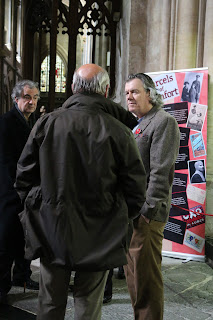 |
| Alan,exhibition patrons & members of CWGC |
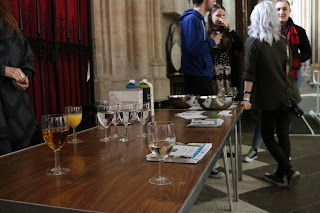 |
| selection of beverage ... or what's left of them |
 |
| Marko Dutka at the Gallery Private Day |
 |
| Shrouds of the somme on college green |
19'240 model shrouds were placed on college green to commemorate 100 years since the Somme, representing the men who died on the first day of the battle of the somme in the Autumn 1916
Living Memory Project:
Canadian records & reception building at Brookwood Commonwealth Cemetery
Canadian records & reception building at Brookwood Commonwealth Cemetery
On friday the 18th of november a small group of students from city of bristol myself included went to attend a assembly & celebration of the actions of those who participated in the living memory project up & down the country, Brookwood Commonwealth Cemetery was the venue for this occasion due to its historic importance and proximity to London.
CWGC description of the projects on display on the day
"...today you can see some of these inspiring projects in action including Shorncliffe Lanterns, Royal Scottish Pipe Bands performance of their Living emory lament, the Testament of Youth photography exhibition taken by the City of Bristol College with Marko Dutka, Living Memory exhibition taken from Oxford University Globalising and Localising the Great War Programme with Sixty-Six Men of Grandpont and Botley Women's Institute."
"...today you can see some of these inspiring projects in action including Shorncliffe Lanterns, Royal Scottish Pipe Bands performance of their Living emory lament, the Testament of Youth photography exhibition taken by the City of Bristol College with Marko Dutka, Living Memory exhibition taken from Oxford University Globalising and Localising the Great War Programme with Sixty-Six Men of Grandpont and Botley Women's Institute."
 |
| Marko setting up the testament to youth gallery at Brookwood |
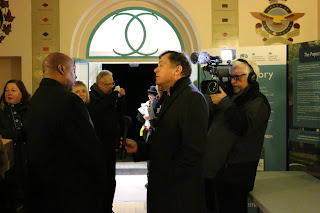 |
| posterity interviews were conducted for each project, I representer the Testament to Youth project |
Brookwood commonwealth cemetery
Map:
Befor the Living memory project reception we were toured around the cemetery
Map:
Befor the Living memory project reception we were toured around the cemetery
CWGC Living memory project Presentation:
The Program
Start: 3:15PM
Opening Performance: Chepstow Singing Club
Words of welcome: Victoria Wallace, Director General CWGC
The Living Memory Project - the ambition: Colin Kerr, Director CWGC
Casualties of the Somme in the British Isles: Dr Glyn Prysor, Lead Historian CWGC
Living Memory Video: a celebration of Living Memory
Living Memory Projects - the communities: Dr Virginia Crompton, CEO Big ideas Company in conversation with Roydon Branch of the Women's Institute and the London Borough of Havering
Living Memory, Dunbartonshire: Presentation by Paul Hamilton
Friends of West Norwood Cemetery: Presentation by Rose Fenn
St Michael's Youth Project: Presentation by Patrick Mckay
Closing Statement: Sir Tim Laurence, Vice-Chairman CWGC
ACT of REMEMBRANCE
Assembling outside to follow Piper Ian Burrows of The Royal Scottish Pipe Band Association of Northern Ireland, to the Brookwood 1914-1918 Memorial where we lay 141 lanterns.
The act of remembrance included a reading by chris Shaw of the Shorncliffe Trust and the Chepstow singing club's unique rendition of The Last Post followed by a 2 minutes remembrance in silence before a thanks and farewell from the staff of the CWGC.
The Program
Start: 3:15PM
Opening Performance: Chepstow Singing Club
Words of welcome: Victoria Wallace, Director General CWGC
The Living Memory Project - the ambition: Colin Kerr, Director CWGC
Casualties of the Somme in the British Isles: Dr Glyn Prysor, Lead Historian CWGC
Living Memory Video: a celebration of Living Memory
Living Memory Projects - the communities: Dr Virginia Crompton, CEO Big ideas Company in conversation with Roydon Branch of the Women's Institute and the London Borough of Havering
Living Memory, Dunbartonshire: Presentation by Paul Hamilton
Friends of West Norwood Cemetery: Presentation by Rose Fenn
St Michael's Youth Project: Presentation by Patrick Mckay
Closing Statement: Sir Tim Laurence, Vice-Chairman CWGC
ACT of REMEMBRANCE
Assembling outside to follow Piper Ian Burrows of The Royal Scottish Pipe Band Association of Northern Ireland, to the Brookwood 1914-1918 Memorial where we lay 141 lanterns.
The act of remembrance included a reading by chris Shaw of the Shorncliffe Trust and the Chepstow singing club's unique rendition of The Last Post followed by a 2 minutes remembrance in silence before a thanks and farewell from the staff of the CWGC.
 |
| Display showing the projects by different groups with the top two images being related to Our Project |
<Marco & Alan>
 |
| Chepstow singing club |
 |
| The Talks of the CWGC & presentations of the Living Memory Project Participants (Presentation by Patrick Mckay) |
 |
| Talks of Sir Tim Laurence |
 |
| Sir Tim handing out Certificates for the participating Communities |
 |
| Our charming lecturer and representative for Bristol college Alan receiving our Certificates with a handshake from Sir Tim |
The lantern procession
Official CWGC Images from Event at Brookwood
Receiving Certificates with congrations from Lee, Principal of City of Bristol College
http://www.cityofbristol.ac.uk/news/students-receive-royal-stamp-of-approval/
City of Bristol College photography students were recognised at an awards ceremony in London for their involvement in Living Memory, a 141 day project from the Commonwealth War Graves Commission that mirrors the duration of the Battle of the Somme.
Over 200 community groups from across the UK took part in the project, including schools, libraries, sport clubs and colleges. As part of the event, the group of Extended Diploma in Photography students created images from First World War graves at Arnos Vale Cemetery.
A special event was held at Brookwood Military Cemetery to mark the end of the 141 days of the Battle of the Somme. Community groups from across the UK who had taken part in the Living Memory project this year were invited to come together, share their experiences and celebrate their achievements. Students were able to meet Vice Admiral Sir Tim Lawrence, husband to Princess Anne, and discuss their project and experiences.
College student Clifford Bancroft commented: "It was challenging to gain an essence of who the people were through their graves. It was a privilege to be involved in such an emotional powerful commemorative event."
Photography students were given recognition certificates from the Living Memory project by Principal Lee Probert at a College celebration event.
Principal said: "I’m delighted to be able to recognise the excellent work our students have achieved. These are powerful images reminding us of the impact of that moment in our history and are a fitting way to commemorate the lives and memories of those who gave their lives."
Arnos vale, CWWGC, Living Memory Project evaluation
I have learnt and done a lot during the duration of this task, from learning new skill and different photographic formats in regards to digital photograph and in terms of compositions techniques to a closer respect and understanding to a very important chapter of history in the making of the modern world. I personally felt I had gained a huge wealth of experiences & knowledge in in transferable skills and in cherishable memories.
 |
| those present at the Living memory project event at Brookwood |
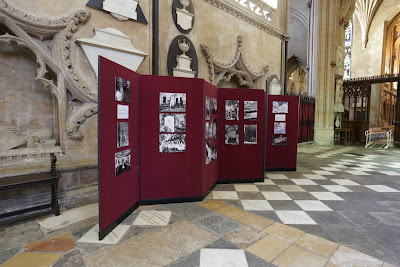 |
| Testament to Youth Cathedral exhibition |
 |
| Sir Tim handing the certificates to lecturers Alan |
Environmental Portraiture, Animals or Creative Architecture Project II: We were asked to choose from three subjects to undertake as project two: choices from.
Statement of Intent:
The choice of subjects I have is between environmental portraits, animals and creative architecture, with only one to choose as my final subject. Each subject has massively diverse opportunity for creative imagery & each subject also has a broad archive of previous photographers who have experimented around with the subject.
For the upcoming project I intend to work around the subject of architecture where I will explore the various sub-variants and subjects of architectural photograph & experiment with different ways of approaching a select sub category of architecture. The sub category I have chosen to look into is coastal or waterside based architecture with consideration of classic & modern architecture. The Location of focus I Portishead, in particular the Portishead Marina Estates which is a modern development on top of what was a power station which was demolished in 1992. The history of the brown field site and what it has become is interesting for that a industrial complex has been replaced with what could be called desirable modern housing, these buildings that have replaced the old building are built with a level of manufactured individuality to make up for the claustrophobic nature of each estate however this depends depending on which estate on the quay you are one for some areas are more spacious with room while others are completely boxed in with houses & tite streets, one redeeming factor would be the high level of pedestrian & green spaces overall making the environment seem safer and more friendly environment for human habitation.
The GEOGRAPHY of Portishead Port Marina:
types of architecture & architectural photography:
Photographers:
Architectural photographers have focused on capturing every possible aspect of man made structures, a fascination which Talbot himself had with some of the earliest pictures in the 1840's using static subject like buildings to calibrate and experiment with the new & untested medium. Today Architecture has greatly diversified and expanded with the population & so has photography, the medium has greatly evolved with the progression of technique and technology with equipment especially designed for specific genres, for instance the Tilt/shift lens for architectural photography.
Some significant architectural photographers:
influential architects & designers:
Charles-Édouard Janneret
Norman Foster
Portishead marina:
history of site: estate built on derelict brownfield site which was previously occupied by a 1929 coal power station named buildings A Station & B Station:
The Plant was decommissioned in 1982 with the building being demolished in 1992.
 structures:
structures:
The area is made up of 3 main estates with the epicenter around the Quay marina, the Quay acts as a divide between the estates on the East & West banks. Each estate has its own definitive architectural styles, most buildings have clear nautical influences while incorporating both national & international architectural influences.
layout:
The layout of the marina is commonly referred to as a rabbit warren with both banks having narrow winding roads with a lot of pedestrian space yet all feeling very enclosed with houses.
ideology & design philosophy:
The site has been created with
The buildings in the marina have been constructed with combining of utilizing all available space, creating a estate created with
Practice coastal Architecture:
The choice of subjects I have is between environmental portraits, animals and creative architecture, with only one to choose as my final subject. Each subject has massively diverse opportunity for creative imagery & each subject also has a broad archive of previous photographers who have experimented around with the subject.
For the upcoming project I intend to work around the subject of architecture where I will explore the various sub-variants and subjects of architectural photograph & experiment with different ways of approaching a select sub category of architecture. The sub category I have chosen to look into is coastal or waterside based architecture with consideration of classic & modern architecture. The Location of focus I Portishead, in particular the Portishead Marina Estates which is a modern development on top of what was a power station which was demolished in 1992. The history of the brown field site and what it has become is interesting for that a industrial complex has been replaced with what could be called desirable modern housing, these buildings that have replaced the old building are built with a level of manufactured individuality to make up for the claustrophobic nature of each estate however this depends depending on which estate on the quay you are one for some areas are more spacious with room while others are completely boxed in with houses & tite streets, one redeeming factor would be the high level of pedestrian & green spaces overall making the environment seem safer and more friendly environment for human habitation.
The GEOGRAPHY of Portishead Port Marina:
Portishead in relation to the local geography and to other towns and cities
the marina in relation to Portishead
The area I will be focusing on is the new housing complexes around the marina which have replaced the power station that once stood there, I will be looking at the building on the south bank which were pre 2007 buildings & also photographing the north bank which are post 2007 building.
types of architecture & architectural photography:
Photographers:
Architectural photographers have focused on capturing every possible aspect of man made structures, a fascination which Talbot himself had with some of the earliest pictures in the 1840's using static subject like buildings to calibrate and experiment with the new & untested medium. Today Architecture has greatly diversified and expanded with the population & so has photography, the medium has greatly evolved with the progression of technique and technology with equipment especially designed for specific genres, for instance the Tilt/shift lens for architectural photography.
Some significant architectural photographers:
Andreas Gursky
Thomas Struth
Aaron Siskind
lewis baltz
influential architects & designers:
Charles-Édouard Janneret
Norman Foster
Portishead marina:
history of site: estate built on derelict brownfield site which was previously occupied by a 1929 coal power station named buildings A Station & B Station:
The Plant was decommissioned in 1982 with the building being demolished in 1992.
the "marina" once used the delivery of coal & oil by ships transitioned from a Harbour to a Quay for privately owned watercraft.
The area is made up of 3 main estates with the epicenter around the Quay marina, the Quay acts as a divide between the estates on the East & West banks. Each estate has its own definitive architectural styles, most buildings have clear nautical influences while incorporating both national & international architectural influences.
layout:
The layout of the marina is commonly referred to as a rabbit warren with both banks having narrow winding roads with a lot of pedestrian space yet all feeling very enclosed with houses.
ideology & design philosophy:
The site has been created with
The buildings in the marina have been constructed with combining of utilizing all available space, creating a estate created with
Practice coastal Architecture:
when working towards creating a portfolio on the Architecture at portishead marina I initially looked at general British coastal architecture
Clevedon
the roofs against a backdrop of the severn estuary
the geometric shapes in scaffolding
The architectural details in an old derelict home on the clevedon front
framing the sky and shape in a seaside home
Spotting geometric shape in a post war modernism architecture on the Victorian setting of the Clevedon sea front
the Victorian pier against the backdrop of the sky
the lines and pattern in normal structure
framing the sky in a dark ominous alleyway on the clevedon high street
The variety in shape, structure & style over the clevedons rooftops
back alley structure & leading lines
A garage door with interesting light, shape pattern & texture including other features
Redcliff
the difference between closeup subject and points of interest out of focus in the backdrop
Bristol harbourside
A photo incorporating shape in architecture of differing types ad in the shapes of nature
My other unused brief subject Animal Photography
Planning the shoot and understanding variables:
equipment
I knew that I would need a Tripod, sometimes I will need to use flash, generally small aperture/large DOF images, longer shutter speeds. Usually would use a prime lens.
H&S.
I need to have a spatial awareness when using a tripod, and to ensure that anyone in close proximity within an image should be informed of what I was doing.
Weather.
Weather would play an important role in making the images, checking weather conditions before shoots will be very important. Probably long shutter speed at this time of year. Take brolly to protect camera from rain. Know where the sun rises and sets before I plan to make images.
Geography.
Having a plan of what is in store will be important, the lay of the land and what to expect will all be included in planning. If out in remote areas I need to inform someone of where I will be and report back on return.
-------------------------------------------------------------------------------------------------------------------------
The First Photo Session took place on a cold & frosty morning which started off sunny however fog ended up rolling in off the estuary to engulf the port marina, During this first session I took a total of 302 photographs, here is a selection of some of the ones I like, but I still need to edit down to a workable amount.
Session one Overview: during this session I focused on creating images with a level of uncertainty, atmosphere, mystery by working with the fog to create such identifiable interests. Due to the unplanned nature of the descending mist ment that the first session became more of a improvised shoot since my previous plan of capturing full photos of buildings and quay geometric shapes, colour, texture & use of reflection had been compromised by the sheer thickness of the fog and by the flatness of the light, how ever I did manage to capture a large number of close up or scaled down images based on the old session plan however the pre planned landscape photos of the quayside now we're atmospheric shots since at a distance all that could be seen through the fog is indistinguishable shapes & silhouettes which leave a lot to the imagination, in other words it truly makes you thing, the mystery of what's out there is insatiable.
The Second Photo Session was a cool flat light day but I still managed to take 841 photos, the following selection are either noteworthy in some way or are worth explaining, cutting down over 800 images meant that many good photos didn't make the cut but I'm not selecting images based on technical competence alone, the relevance to the brief & final sequence of only 12 images are what truly matters for the end goal of the project.
Edited images (experimental / Lecturer Edits)
layered, one Monochrome tones while other cold filtered to bring out blue mist in the glass
image straitened and monochromed to tonal range
 |
| Image Colour Invertion |
Final images:
Architectural
Abstract
project conclusion
Past/ Creating photographs on the concept of the word PAST
For this task we were expected to take photographs of a vague subject task which in this case was "photographing Past", not "The Past" as in Noun or any other grammar specifics, just the plain word "Past" & we were expected to interpret this task in any way we could think of.
Past definition's:
Former
Post
Ethereal
Absence
Obsolete
Preceded
Remote
Photographer
Images
Antique chair
 |
| the seat seems well worn |
Remembrance cabinet
 |
| names of people long since passed |
Sun & shadow
 |
| The sun at its height in an Autumn day |
The River Bank
 |
| Tides out & the mud is exposed |
Roots & Rest
 |
| A grave, overgrown with Ivy & roots |
Passenger Less Journey
 |
| empty public transit |
Light & Motion
 |
| street lights photograph with long exposure while at high speeds in a car |
Antiquey
 |
| An old seat in an old building highlighted for sun through the window |
Pub Banter on the Quay
 |
| Glasses left behind from drinks between mates |
A moment of rest and reflection
 |
| An empty bench in the afternoon sun |
A Clear Carpark
 |
| customers and staff have gone home for the evening |
Precipitation
 |
| Droplets of water on a steel table |
sun & stairs
 |
| sun shining on an empty stairwell |
Framing
 |
| a long exposed image of a mirror being zoomed |
Light & Speed
 |
| a car dashboard speedometer & fuel gage photographed with longer shutter |
history in light
 |
| photograph of the stars in the sky |
Void
 |
| the empty car park |
Street Light
 |
| photographing lamps while on the move with longer shutter |
Undergrowth Memorial
 |
| a forgotten grave illuminated in drops of sunshine through the canopy |
UFO Illuminations
 |
| a plane & a dark place photographed with a 30 sec shutter |
The rested
 |
| a bench by the harbour |
Free Parking
 |
| "It was full this morning" |
Freezing Light
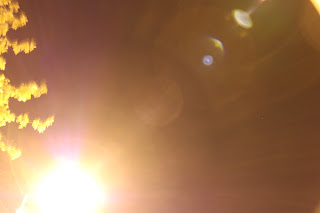 |
| long exposure of a light & night sky |
Light Painting
 |
| extended shutter of lights while running at a swift pace |
Dock Ducks
 |
| Duck leaving foot trails in the mud in a harbour at low tide |
No Occupants
 |
| All alone on an empty bus |
stretching light
 |
| zooming in on light source which is a company logo |
Mud & colour
 |
| a Rainbow at low tide |
the passing green
 |
| deciduous trees photosynthesising in the sun's warmth |
Each photo incorporates the past or of passing in some form froze as a photographic time capsule, some are photos of history or of things that are considered as archaeology or antiquity while others demonstrate time's passage embodied in photographic form, time captured from its 5th dimension, as time acts upon you with no physical manifestation however its passage leads to changes in the fourth dimension of perceived reality.
 |
| The term past can be interpreted for this image in both forward and in abstract ways, for one the photo shows the passage of time in each stage of the zoom during the photos exposure while also being |
Essay 800 word
• 800 word Research essay on specialist fields of location photography.
• Six to eight photographs for the two themes, (Documentary Mandatory)
mounted for presentation.
Architecture (include others in sub areas portrait/ industrial) & Documentary (combine importance of subjects)
You are expected to investigate both historical and contemporary practice in location
photography and to include leading photographers, their images and their influences.
Evidence required for assessment:
Location Photography is a very diverse genre of photography which involves almost everything photography and has no clear definition but the location seems to refer to an existing place which unlike studio photography is for the most part constant where instead of the studio photographer creating the environment themselves, they instead are the observer capturing their observations. A studio however is a photographer's personalisable controlled environment where lighting and location can be made to emulate a myriad of environments however in some cases the studio is used as the location but this is when the studio is its own environment as itself. The best way to define location in location photography seems to be a literal translation of location as a place or venue which you could travel to being it an indoor or outdoor venue. As said befor Location Photography is a diverse subject with a broad number of genres with many sub-genres with each giving a plethora of options for creativity which can be applied in many different ways be it Artistic or for Commercial use.
Architecture is a genre of location photography which allows for a flexible & creative subjects which are for the most part at ease to access, architecture is everywhere and allows for an almost literal infinite photographic possibilities, from different architectural styles and all it entails to historic architecture, industrial architecture and much much more.
Travel
Photography can be an exciting genre of photography to pursue. One needs to
have experience of travel and holidays generally, but in essence the
photographer needs to create images that sell the world. Commercially most work
will come from Travel companies and the work would most probably be used in
brochures and advertising. Sometimes the photographer may undertake personal
work and create postcards or calendars with their own images.
The
photographer would have varying approaches to his work, some days he could
spend making landscapes of beautiful scenes while other days may be spent
documenting hotel events and day trips for holiday makers. Each has its own
approach.
If the photographer is working for himself the they would be most likely to be
travelling independently, creating images of their own experiences. With this
in mind one would imagine that a certain amount of planning would be involved,
knowing what events may lye ahead is important, festivals and parties, special
scenes at certain times of year are a mecca for travellers, Mecca, The Taj
Mahal, Migrations of animals etc. The photographer would generally travel as a
photographer and not as a holidaymaker.
Documentary
photography is very close to travel photography in that the photographer is
either working for a commissioner or for him/herself. Newspapers and Magazines
generally engage self employed photographers to create the images they want.
Documentary is traditionally known as simply recording an event, this may range
from fashion to news events at home or
War abroad, in each case the photographer need to be involved in the subject.
Equipment needs to be very minimal, lightweight and easily carried as most documentary photographers need to move quickly to follow fast moving action. Equipment would include Prime and zoom lenses, an occasional tripod (though not often) definitely flash units, lots of large memory flash/compact flash cards,, also a Laptop is a necessity, as most documentary news images need to be wired back to the commissioner immediately.
UNIT 30 Location: Evaluation
Over the course of location unit 30 I have delved greatly into the subject of the meanings of the term "location" in terms of photography. As part of this unit I covered the nuances and importance of colour in the ways colour can impact on the viewer and on the fundamentals of its universal uses including in colours creation and use in both print and digital mediums. I also covered the topic of translating possible word definitions into photographic representations, for this we were given the word past and we translated this word as we saw fit. In another project I became familiar with planning for an outdoor & adapting when faced rapidly changing and unideal conditions. For the main task of this unit we were commissioned a brief in conjunction with an external body to create a series of images related to the brief, It so happened that the "commonwealth war graves commision" were organising events across the country to commemorate the forgotten soldiers on the centenary of the great war and the battle of the somme. For this project we spent large amounts of time at arnos vale cemetery with the intent to photograph war graves using a digital pin hole format on our cameras to replicate the style of photography of the time, or at least give an emotional essence to imply the history of the subjects, to enhance such effect I became far more familiar with functions of photoshop & when interviewed for the overview of the exhibition learnt a level of confidence in the face of extreme anxiety. Overall I feel I have gained a greater understanding of photography and its nuanced relations with location & I also have gained many translatable skills that I can use in a wide array of applications.
Memos:
Research
Produce an 800 word illustrated research essay on a range of specialist areas of
location photography; this is to include at least four from the following list:
Architecture, Social, Travel, Industrial, Documentary, Sport,
Portraiture, Reportage.
Your notes should include:
The differences between the specialist areas listed above (and
others you may think of).
Comparisons with studio photography.
Specialist techniques.
Specialist equipment.
Health & safety.
Photos included
https://www.smashingmaga
zine.com/2010/07/the-showcase-of-beautiful-pinhole-photography/
http://chriskeeney.com/portfolio/about-chris-keeney/
https://arnosvale.org.uk/discover/heritage/war-graves/
https://www.forces-war-records.co.uk/
http://www.bbc.co.uk/bristol/content/image_galleries/portishead_2008_gallery.shtml
http://www.bristolpost.co.uk/boom-town-portishead-just-dormitory-bristol/story-21744324-detail/story.html





































































































































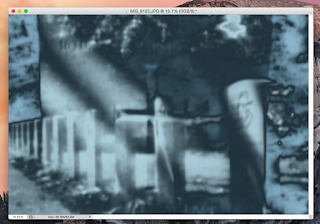


























































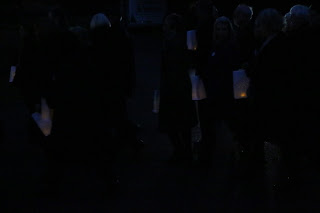



























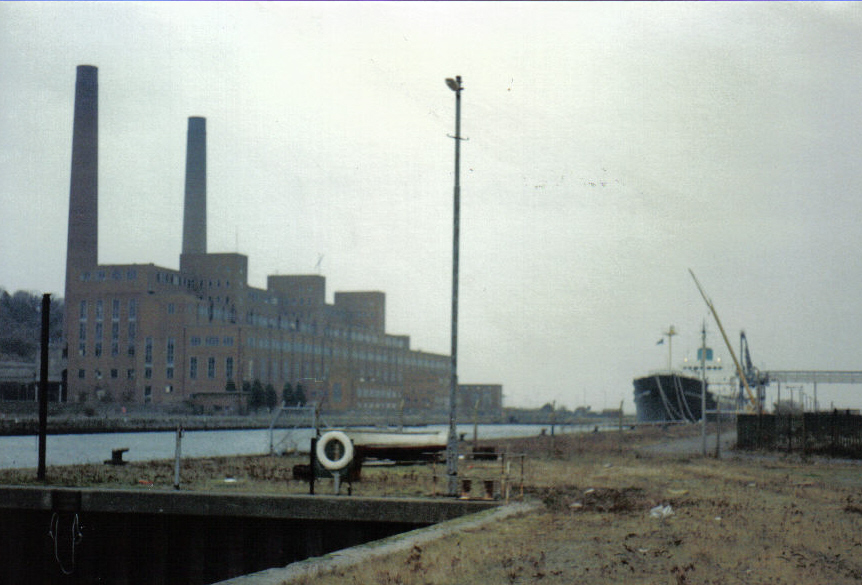















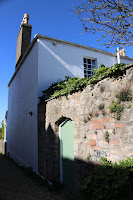










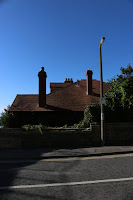



































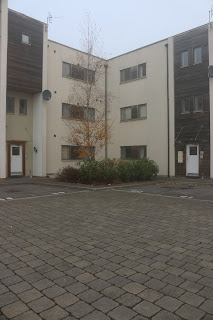










































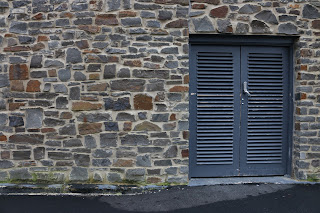





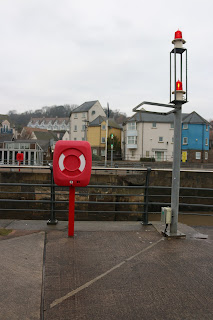


























































































No comments:
Post a Comment